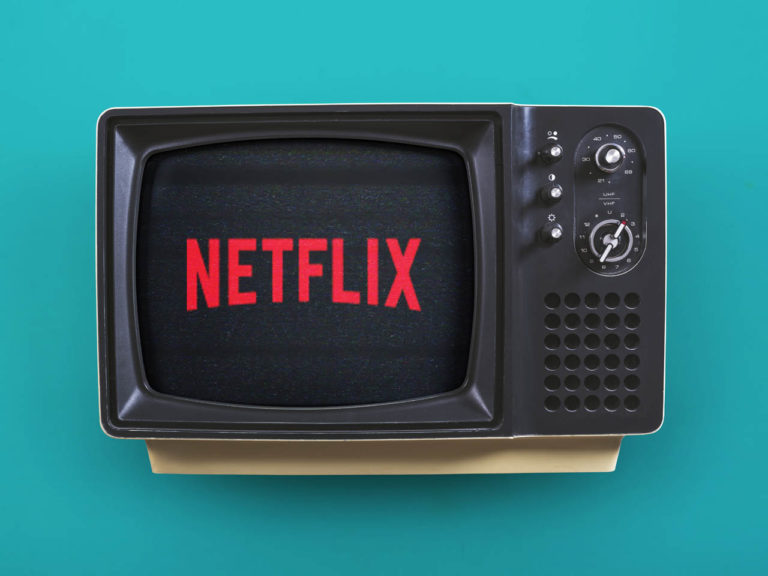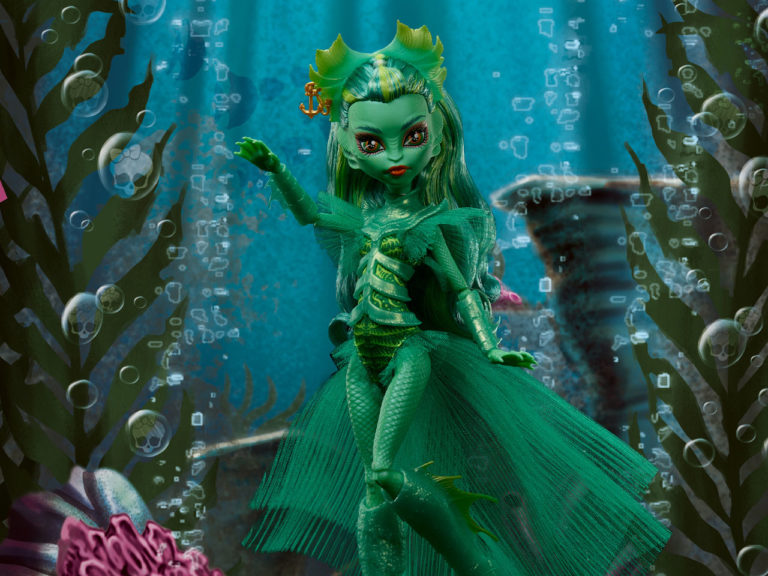
Who is Harley Quinn? That totally depends on where you jump into her story, and that’s part of what makes her great.
Often times, when we dig into a character’s backstory to profile them, they’ve been around for decades and undergone countless transformations and resets. They appeared on other labels or have had multiple secret identities, and were often created before our parents were born and while our grandparents were still kids. Today, though, we’re looking at someone a little more modern: Harley Quinn.
Harley Quinn’s Origin Story

Harley’s origin out here in the real world is perhaps even more interesting than her origin in the comics. She wasn’t designed to sell comics or even with the expectation that she would be an ongoing character. Her staying power is entirely the result of creators listening to fan response.
Harley didn’t originate in the comics. Her first appearance was on Batman: The Animated Series in the 1992 episode “Joker’s Favor“. This episode centered around the idea of the Joker setting his sights on a random schmuck. Harley was brought in incidentally. Co-creator Paul Dini told Entertainment Weekly about where the idea came from: “The idea occurred to me, let’s put in a female henchperson, because that seemed like a fun variation on the regular big thug guys.”
Dini wanted to call back to the gun moll-type characters that the villains often had in the 1966 Batman series. Dini and series creator Bruce Timm didn’t have long-term plans for her. When they needed a bunch of Joker goons in a scene in a later episode, they decided to throw her in. Dini said that the audience began to expect her after that. There was some initial resistance to the inclusion of a series-original character, but the time they spent fleshing out the character helped push past that.
From there, fans began to latch onto the character as a great foil for Joker’s personality.
Into the Pages

After her appearances in Batman: The Animated Series, Harley slowly started to make her way into the comic books. Her first two staple-bound appearances were in Batman Adventures #12 and The Batman Adventures: Mad Love. Both of these were Animated Series-related books and not part of DC canon. It wasn’t until the Batman: No Man’s Land storyline that Harley started to make her way into DC comics proper, and she wouldn’t get her own book until 2001.
In the years that followed, Harley would ally with and betray her best friend and sometimes girlfriend Poison Ivy as well as characters like Catwoman in books like Gotham City Sirens and other Harley solo books.
Over the years, comics have elaborated on her origins in different ways, some of them more canonical than others. She’s always been a Ph.D.-toting Doctor of Psychology who works with–and then becomes obsessed with–the Joker.
Who is Harley Quinn? – Mixed Origins
2001’s Harley Quinn #8 introduces us to Guy Kopski, boyfriend of Harleen Quinzel and fellow doctorate hopeful. An experiment gone wrong ends with Guy killing an innocent man for Harley and then killing himself. While it later would come out that Harley’s doctor, Dr. Markus, had engineered the experiment to fail by introducing Joker Venom into the mix, the whole ordeal convinced Harley of the truth of chaos and that she understood the Joker better than anyone, leading into her obsession.
In the recent Harley Quinn show, we learn that Harleen comes from an abusive family in New Jersey and that her violent background has fueled both her need for approval and her willingness to solve problems with a bat. Harley usually has this thick Jersey accent, but it’s conspicuously absent from this incarnation. That is, until she gets around her family. The accent comes out the same way it can for people who have moved away from an area known for having a heavy drawl or something similar.
With DC constantly going through Crises, it’s hard to tell for sure what is and isn’t canonical. The Harley series likely isn’t, though it definitely pulls from many core elements of Harley’s backstory.
Harley’s Star Rises

Harley quietly amassed a fanbase, but her popularity started to really explode with the 2009 release of Batman: Arkham Asylum, which not only marked Harley’s return to animation–this time in a video game–but also the return of the original voice actor Arleen Sorkin as Harley (along with fellow voice acting stars Kevin Conroy and Mark Hamill on the ticket). Not only that, but Paul Dini was at the typewriter pulling all these characters’ lines down on paper.
It felt like a return to form for an almost universally-praised version of Batman. Harley had ditched her old leotard, though, for an edgier outfit somewhere between a nurse and a dominatrix.
It was the same old Harley, but with a much bigger audience. Harley appeared in the next three Arkham games voiced by Tara Strong.
Onto the Big Screen
Then in 2016, a year after Batman: Arkham Knight we saw Harley come to life in David Ayers’ Suicide Squad. There are a lot of questionable decisions throughout this movie, from the misleading trailer to many of the characters’ portrayals throughout. The unquestionable bright spot, though, is Margot Robbie as Harley Quinn.
The Batman Arkham games and this first live-action appearance took Harley’s evolution back a few years, putting her firmly in arms of Joker, and Suicide Squad especially framed the pair as a ride-or-die Romeo & Juliet pairing that the comics had long-since moved past.
Robbie Meets Harley Quinn

Even so, Robbie brought an energy to Harley that, along with some great stunt work, gave us the smart, deadly, and deranged Harley we knew and loved. Robbie has said in interviews that on the press tour for the movie, she started to encounter Harley’s passionate, positive fans, and that put the bug in her ear that Harley needed a movie of her own.
“When I was researching the character, I started to read Birds of Prey and first I fell in love with Huntress and I started looking into all of that,” Robbie said talking to Nerdist. “I was like, ‘wow, there’s so many cool female DC characters and no one knows any of them!’ So what if we had a platform for fans to get to know and fall in love with some of these amazing women?”
Robbie said that while Gotham City Sirens offered up three well-known, established characters, but that a Birds of Prey story stood out as a way to introduce new characters to fans through a live-action film that might not otherwise know about them.
Ultimately, the process of convincing studio heads, finding creatives to write, direct, and act in the movie, and then finally make it turned into a five-year process for Robbie, who not only stars in the movie but produces it as well.
What draws fans to Harley?
Despite Harley’s relative youth in the DC universe–she’s not quite 30 in real-world years, where Batman and Superman have passed 80–she’s developed an impressive popularity with comic book fans and become an entry point to those new to comics (something comics desperately need these days).
So what is it about DC’s jester that makes her so big that DC’s Jim Lee referred to her as the company’s “fourth pillar” alongside Superman, Batman and Wonder Woman?
I looked at interviews with fans of Harley and talked to a few friends who are fans. Compared to the Big Three, Harley unquestionably offers something different in tone and style. I often hear people describe the difference between DC and Marvel as the former being about gods and mythic beings while the latter is about flawed people with special powers (and more than a few crucial weaknesses). Harley is closer to Marvel, in that way, than DC.
Harley is iconic in her own way, of course. Bruce Timm based the initial character design off of the Harlequin jester in the Commedia Dell’Arte. Despite many outfit changes, Harley always goes back to a few iconic elements. She’s always wearing some combination of red and blue or red and black, laid out in halves and blocks. She’s always a gymnastic prodigy befitting of her jester background. And she’s almost always wielding either a blunt melee weapon or a rocket launcher.
Harley Welcomes Fans
But beyond that, she’s flexible in a way that most of DC’s other characters aren’t. We can look back through any DC hero’s repertoire and see a few variants: golden and silver age, modern, ultra-modern, that time they were a Lantern, the evil version, and an Elseworlds take or two. Harley, however, has such a strong sense of style that artists can put her in countless outfits without her losing her identity or authenticity.
While fans definitely give their takes on other heroes, Harley welcomes those takes in a way that other heroes just don’t. I can’t help but think about the Batman figures I used to see on shelves in the days of the Animated Series and the original run of Batman movies. Anti-Freeze Batman, Baja Blast Batman, Gamer Fuel Batman. Those might be Mtn Dew flavors. They’re not far off of the cash-in figures toy companies released back then, though. Harley doesn’t have as many gimmicks as Bats, but she has countless looks that let fans of her express their inner Harley. Harley breaks the fourth wall the same way Deadpool does, and so even a Princess Zelda Harley Quinn or Spider-Quinn mash-up seems as authentic as her Animated Series jumpsuit or her Suicide Squad getup.
Her Story Hits Close to Home

Her origin and motivation, too, let fans into her mind in ways other heroes’ backstories don’t. It’s easy to imagine what it would be like to lose your parents suddenly or to find out that you’re the very last member of your planet (except for the floating city Argo, the shrunken city Kandor, your cousin Kara…); but Harley’s motivation comes from the toxic relationship she was born from. Countless among Harley’s dedicated fans have been in toxic, harmful relationships. Her admirers love that Harley pushes back against her relationship with Joker even while acknowledging that it’s not always as simple as saying “No more.” Even though Harley has moved past him, he’s still part of her history.
With Birds of Prey and the Emancipation of One Harley Quinn just days away, the live-action Harley is getting the chance to separate herself from Joker the same way she has in the comics and animated movies. At the same time, her solo eponymous show on DC Universe streaming service takes a sillier but equally interesting look at the character. The show focuses on her close relationship with Poison Ivy with a comedic backdrop. Birds of Prey also marks the first all-female written-and-directed comic book film in the modern era of comic-book movies, and one of a very small group of R-rated comic-book films since Iron Man and Batman Begins kicked the doors open in 2008.
Harley Quinn has Arrived
You can’t predict whether a new character will be truly successful. With the other DC characters leading movies, we have half a century of compiled comic books that show confidence in the characters and total cultural saturation. Harley Quinn is the very definition of a lucky strike. Paul Dini and Bruce Timm created a one-shot character and brought her back for a second go. Then, she exploded and became something all her own.


